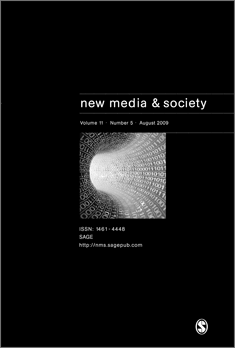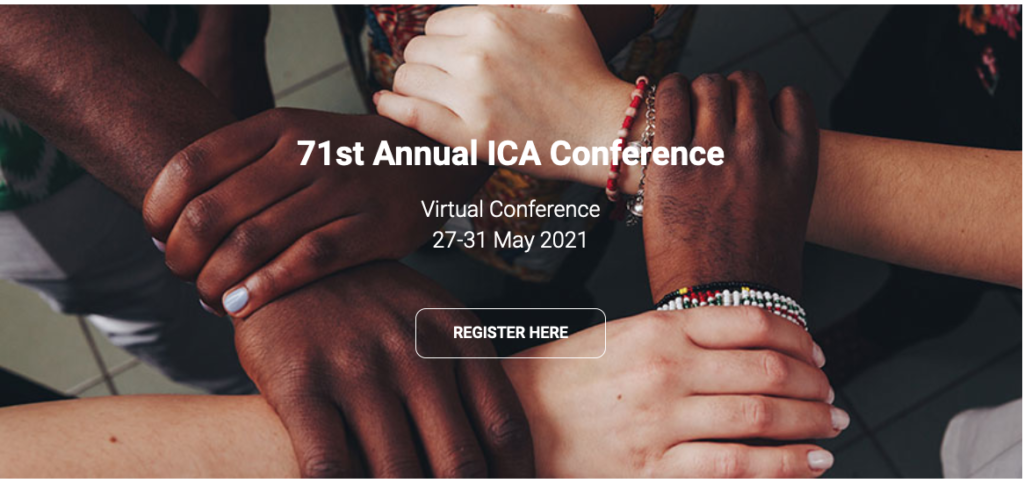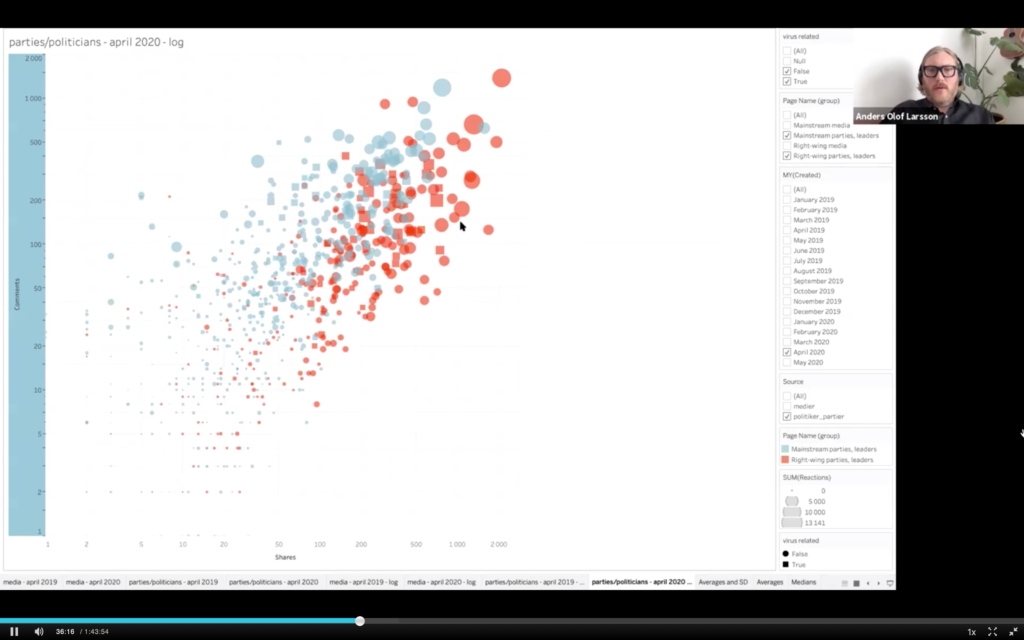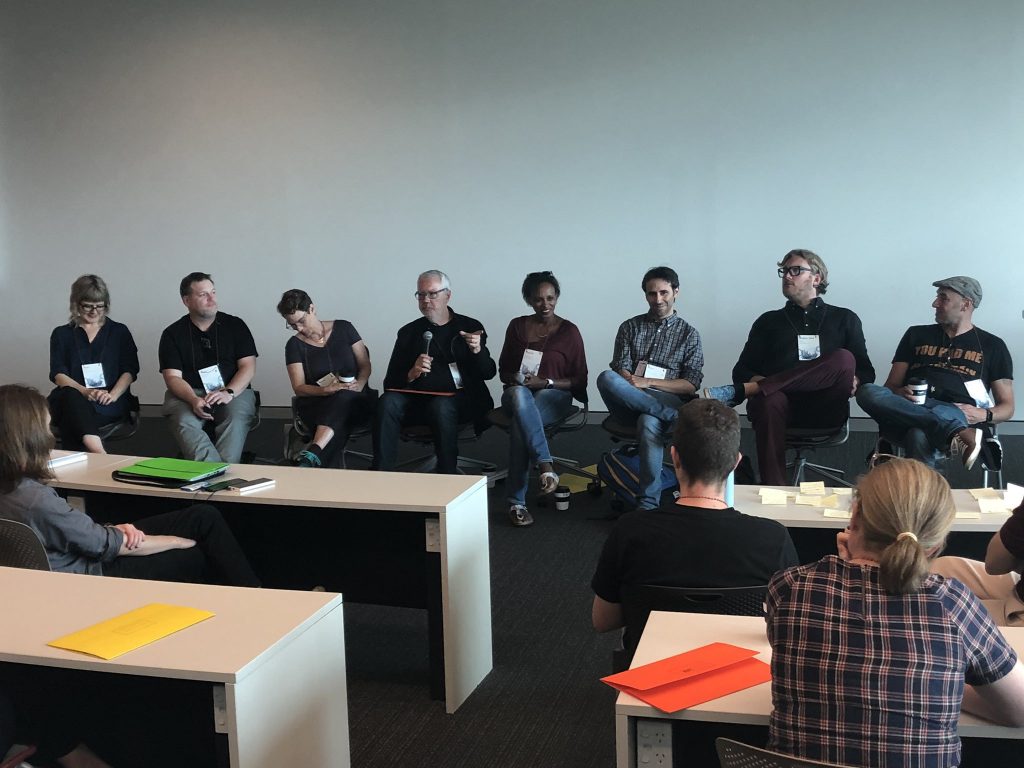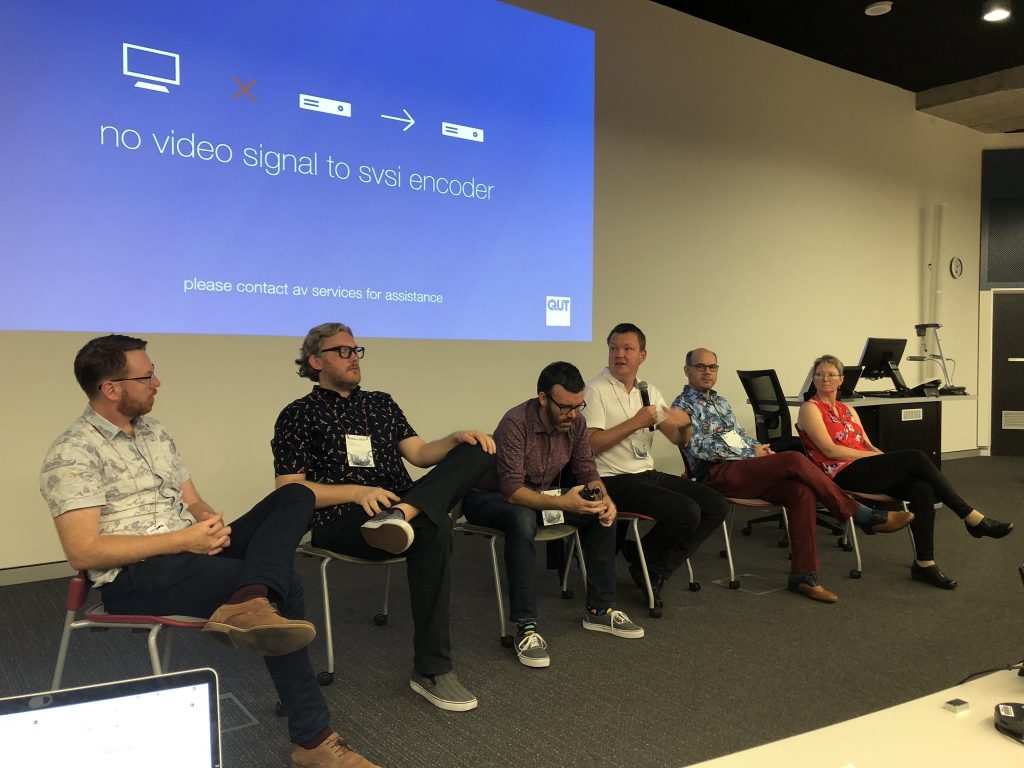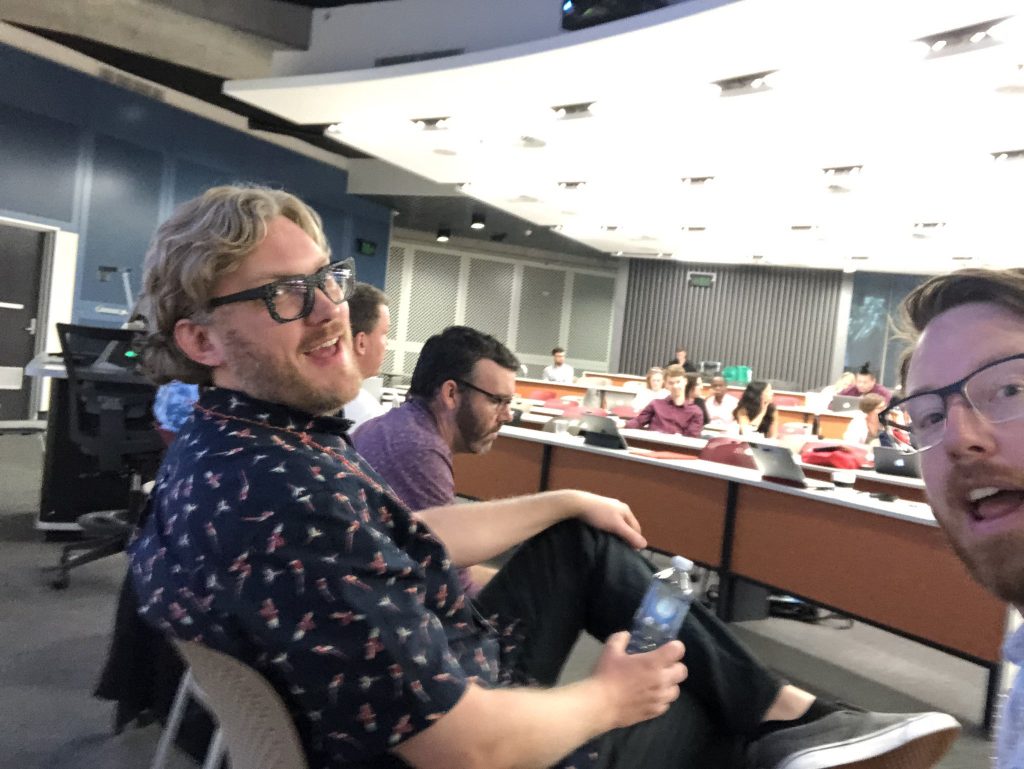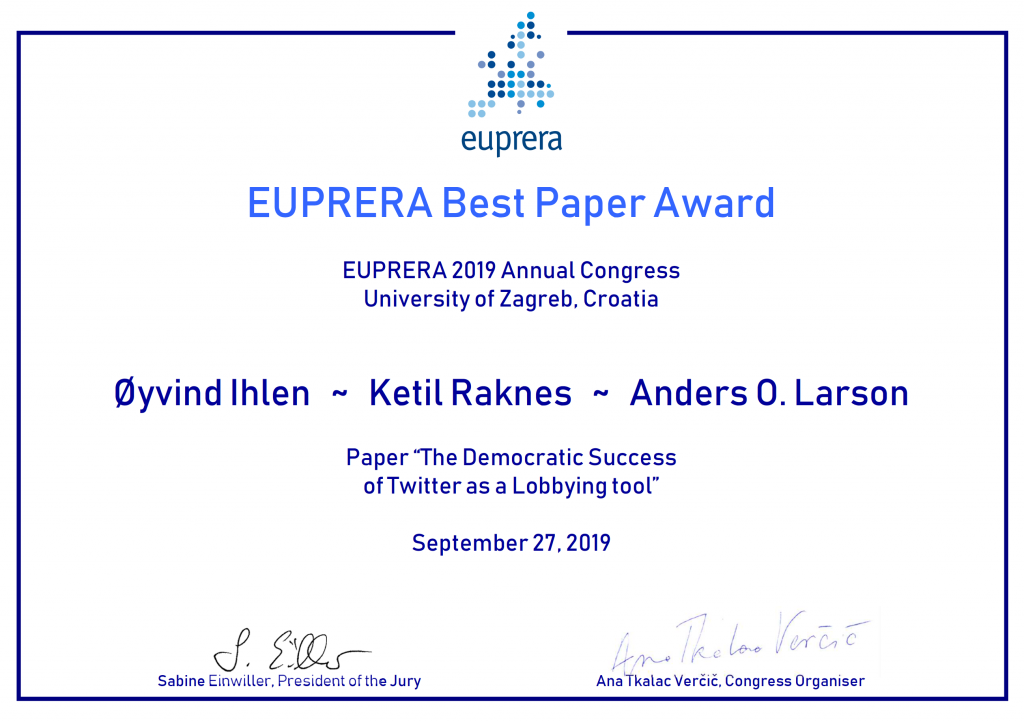Succeeding in raising engagement is key for anyone who wishes to be seen online – perhaps especially for political actors. However, such engagement or indeed interactivity can be demanding for politicians and parties since there is an increased risk of losing message control. In ‘Win a sweater with the PM’S face on it’ – A longitudinal study of Norwegian party Facebook engagement strategies, I use the theory of controlled interactivity (as defined by Stromer-Galley and Baldwin-Philippi) to discuss how the Facebook engagement strategies of Norwegian political actors have varied over time. The abstract reads as follows:
“Receiving Facebook post engagement – such as likes, comments and shares – is crucial in order to succeed online, perhaps especially for political actors. However, online engagement can also be hazardous, as it potentially strips the original poster of control over their messages. Previous work has shown that political actors have been rather unwilling to encourage interaction from their online supporters. However, research has also indicated a need to assess the influence of Facebook in this regard. Building on the theory of controlled interactivity, the study presented here details what is referred to as Facebook engagement strategies among Norwegian political parties on Facebook between 2009 and 2019. Combining quantitative and qualitative approaches in order to compare party and follower activity in relation to the aforementioned engagement varieties, the main findings indicate that parties and followers do not necessarily seek to interact at the same time. Furthermore, tendencies towards gamification, where parties direct user attention towards online quizzes and raffles instead of towards deliberation and political discussion, can be discerned.“
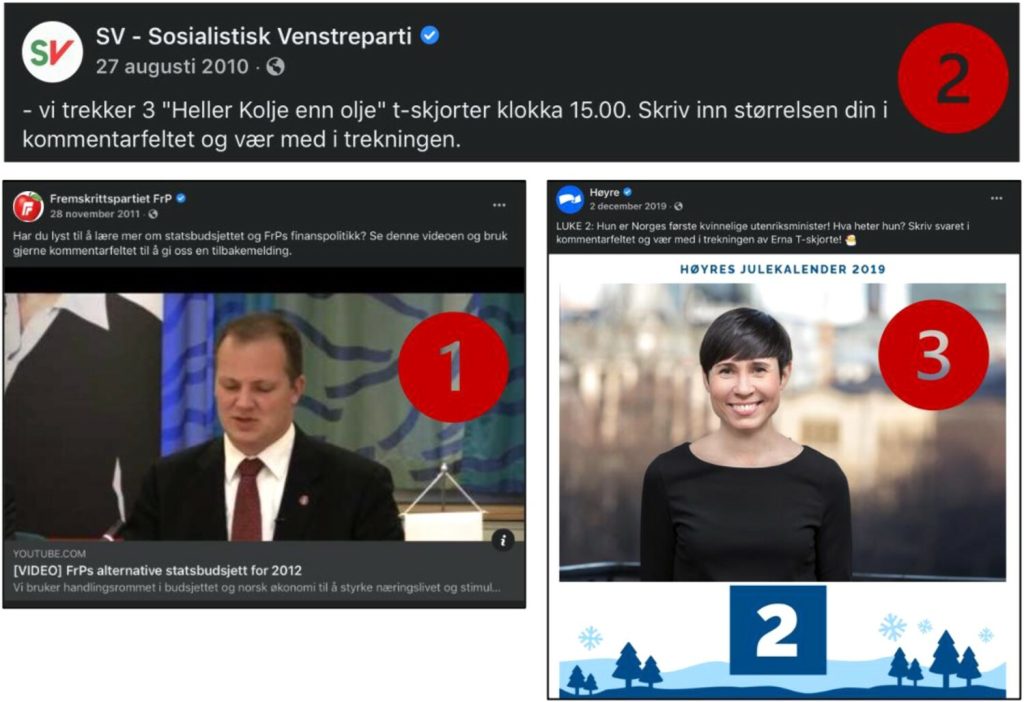
The three posts visible above serve as examples of posts where parties ask for engagement in terms of comments. Comparably early posts featuring comment engagement cues encourage readers to comment on specific political themes or topics. For these posts, parties will typically offer to answer the posted questions in the comments. Section 1 in the image above depicts a typical example of such a post from the Progress Party, linking to a YouTube video where a party representative presents budget suggestions, asking for feedback by means of comments to the Facebook post. The use of video services external to Facebook is also rather typical of this early period of Facebook use by political parties – overtime, Facebook native services have largely overtaken their external competitors when it comes to posting video on the specified platform. A tendency of contests and quiz-like competitions with party merchandise prizes has already been noted. This tendency is mirrored also in sections 2 and 3 from the image. Section 2 provides an early example of such content – here, the Socialist Left Party presents a giveaway of t-shirts featuring a ‘Heller kolje enn olje’ (‘I’d rather have haddock than oil’) print, pitting two core Norwegian industries against each other. Finally, section 3 features an example of the Conservative Party Advent calendar from the 2019 holiday season. Here, we are asked to guess the name of the first female Norwegian Minister of Defence. A correct answer gives us the chance to win a garment with the PMs face on it – a t-shirt this time, rather than a sweater as in another example discussed in the paper. This tendency of almost gamified political communication is visible also elsewhere in the material.
The paper is available open access at Information, Communication & Society.
